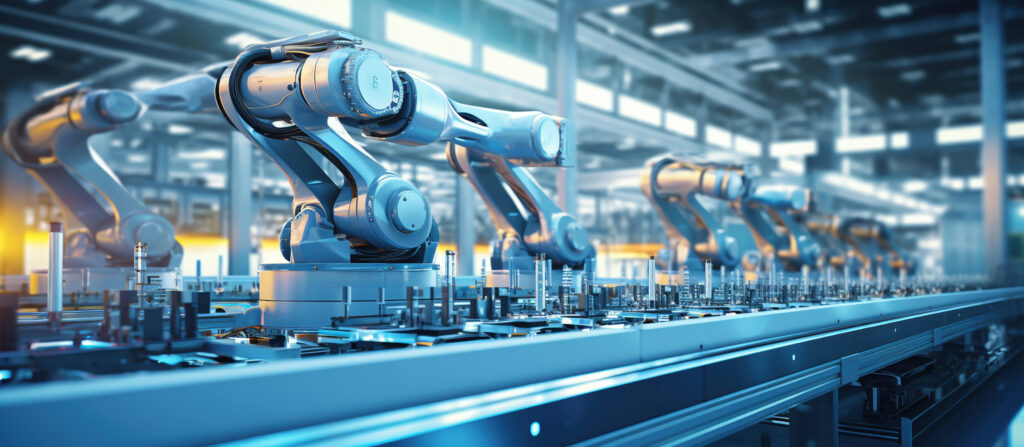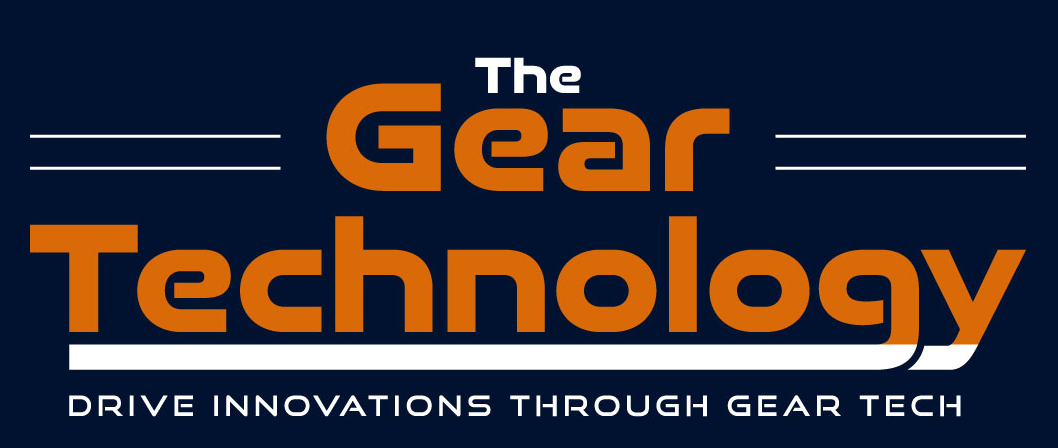Emerging Applications of Gear Technology in Automation
How Gear Technology is Transforming Automation Systems The Role of Gear Technology in Automation Advancements Gears have been essential components in machinery for centuries, playing a critical role in facilitating movement and power transmission across various systems. Over time, the evolution of gears has led to enhanced precision, making them even more valuable in today’s […]

How Gear Technology is Transforming Automation Systems
The Role of Gear Technology in Automation Advancements

Gears have been essential components in machinery for centuries, playing a critical role in facilitating movement and power transmission across various systems. Over time, the evolution of gears has led to enhanced precision, making them even more valuable in today’s technology-driven world.
With the rapid rise of automation technologies, the importance of gears has become more pronounced. Emerging applications of gear technology are transforming industries like automotive, aerospace, and manufacturing. These advancements are helping to improve efficiency, accuracy, and reliability in automated systems.
Automation is now a key component in industrial processes, allowing faster and more precise operations with minimal human intervention. As industries continue to embrace automation, the need for sophisticated and precise gear systems is increasing. In this article, we will explore the latest advancements in gear technology and examine how they support automation in modern machinery.
Understanding Gear Technology’s Impact on Automation
Gears are vital in converting energy into motion in mechanical systems. They ensure smooth transmission of torque and rotational force, making them indispensable in automated machines. The recent advancements in gear technology, such as high-precision gear manufacturing and smart gear systems, are driving a new wave of innovation in automation.
For example, in the automotive industry, automated gearboxes have evolved significantly. By integrating gear technology with automation, modern vehicles achieve better fuel efficiency, smoother transitions, and enhanced driving experiences. Similarly, the aerospace sector relies on gears for operating aircraft components, where precision is critical for both safety and performance.
Emerging Gear Technology Trends in Automation
The integration of gears into automated systems has seen remarkable growth in recent years. Below are some emerging trends in gear technology that are transforming automation:
- High-Precision Gears:
With the rise of automation in critical industries like aerospace, the demand for high-precision gears has grown. These gears provide greater accuracy and reduce wear and tear, making automated systems more reliable. Precision gears help reduce energy losses and optimize the efficiency of machines, leading to cost savings and improved system longevity. - Smart Gear Systems:
Smart gear systems are revolutionizing the automation landscape. Equipped with sensors and monitoring devices, these gears can self-adjust based on real-time data, improving their performance. For example, in manufacturing automation, smart gears can detect stress levels, temperature fluctuations, and vibration changes. This allows systems to correct gear alignment or lubrication issues before they lead to significant damage, thus minimizing downtime. - Miniaturization of Gears:
As automation moves toward compact and more efficient machinery, the demand for smaller gears has increased. Miniaturized gears are used in various automated systems such as robotics, medical devices, and drones. These tiny components require precise manufacturing processes to ensure they deliver the same level of performance as their larger counterparts. - Energy-Efficient Gears:
Sustainability is becoming a key focus in industries that rely on automation. Energy-efficient gears, designed to minimize energy losses and reduce friction, are increasingly used in applications where power conservation is crucial. These gears help automated systems operate with less energy, aligning with the global shift toward more sustainable industrial practices.
The Application of Gear Technology in Automotive Automation
Automation in the automotive industry has been advancing at a rapid pace, and gear technology plays a critical role in this evolution. Gears are essential in powertrain systems, where they manage the distribution of power between the engine and wheels. Emerging gear technologies are enhancing the performance of automated vehicles in several key ways:
- Automated Manual Transmissions (AMTs):
AMTs are an innovative application of gear technology in automotive automation. These systems automate the process of gear shifting without a clutch pedal, improving driving comfort and efficiency. Gears within these transmissions are designed to deliver smooth transitions between speeds, reducing energy loss and increasing vehicle performance. - Electric Vehicles (EVs):
In electric vehicles, gear technology is used to improve the efficiency of electric motors. Automated gearboxes in EVs allow the vehicle to operate efficiently across various speeds by optimizing the rotational energy. Gears help reduce the size and weight of the drivetrain, which directly influences the energy efficiency and range of electric vehicles. - Autonomous Vehicles:
Autonomous driving is heavily dependent on automation, and gears play a crucial role in ensuring that these vehicles operate safely and efficiently. Gear systems in autonomous vehicles are responsible for managing the power delivery to different components such as sensors, cameras, and actuators. High-precision gears enable accurate motion control, which is essential for navigation and safety.
Gear Technology in Aerospace Automation
The aerospace industry is another sector that has significantly benefited from advancements in gear technology. Automation in this field requires precision, reliability, and durability, all of which are enhanced by cutting-edge gear designs.
- Aircraft Landing Gear Systems:
One of the most critical applications of gears in aerospace is in landing gear systems. These gears must operate flawlessly to support the immense loads and pressures encountered during takeoff and landing. Automated gear systems ensure that the landing gear retracts and deploys seamlessly, reducing the risk of mechanical failure. - Flight Control Systems:
Automated flight control systems depend on precise gear mechanisms to manage the movement of control surfaces such as flaps, ailerons, and rudders. Gears are integral to ensuring that these surfaces move accurately in response to pilot or computer inputs, maintaining the stability and safety of the aircraft. - Satellite Positioning Systems:
Satellites in space rely on automated gear systems to adjust their orientation and maintain correct positioning. These gears must operate in harsh environments with extreme temperatures and low gravity. The emerging trend of smart gears allows real-time monitoring and adjustments, ensuring that satellites remain operational for extended periods.
How Gears Improve Precision and Efficiency in Automation
Automation systems depend on precision, speed, and reliability to function effectively. Gears play a central role in ensuring that these systems operate at optimal levels. Below are the key ways in which gears contribute to improving precision and efficiency in automated machinery:
- Precision Control of Motion:
Gears convert rotational motion into linear motion or adjust the speed of movement in machinery. This allows automation systems to perform tasks with a high degree of accuracy. For example, robotic arms in manufacturing use gear systems to control their movement with precision, enabling them to handle delicate components and perform tasks such as welding or assembly with minimal errors. - Reduced Friction and Wear:
Emerging gear technologies are designed to reduce friction, which in turn minimizes wear and tear on components. This is particularly important in automated systems that operate continuously over long periods. By reducing friction, gears enhance the efficiency of these systems and extend their operational life. - Improved Torque Transmission:
Torque transmission is a critical function of gears in automated systems. High-performance gears allow machines to handle heavier loads without compromising on speed or precision. In automation, this means that tasks such as lifting, moving, or processing materials can be performed more quickly and efficiently.
The Future of Gear Technology in Automation
The future of automation lies in the continued integration of advanced gear technologies. As industries demand more efficiency, precision, and sustainability, gears will remain at the forefront of innovation.
- AI-Integrated Gear Systems:
Artificial Intelligence (AI) is set to play a significant role in the next generation of automated gear systems. AI-driven gearboxes will be capable of learning from real-time data, allowing them to optimize performance on the go. These smart systems can adjust gear ratios, detect potential issues before they arise, and self-correct to ensure maximum efficiency. - 3D-Printed Gears:
Additive manufacturing, or 3D printing, is making its way into gear production. This technology allows for the creation of complex gear designs that were previously impossible or expensive to produce. 3D-printed gears will be lighter, stronger, and more efficient, opening new possibilities for automation systems. - Nanotechnology in Gear Design:
Nanotechnology is another emerging field that could revolutionize gear manufacturing. By manipulating materials at the molecular level, engineers can create gears that are incredibly strong and wear-resistant. These gears will be ideal for high-precision applications in automation, particularly in industries like medical robotics and aerospace.
Embracing Gear Technology for Automation Success
Gears are fundamental to the success of automation systems across multiple industries. The advancements in gear technology—such as smart gears, high-precision designs, and energy-efficient solutions—are driving innovation in automation, leading to increased efficiency, precision, and reliability. As industries like automotive and aerospace continue to adopt advanced automation systems, gears will remain at the core of these developments, shaping the future of modern machinery.
In conclusion, the role of gear technology in automation is critical, and its importance will only grow as we move toward more automated, data-driven industries. Embracing these emerging technologies will not only improve productivity but also enhance the sustainability and longevity of automated systems.

